Wai-Fah Chen.The Civil Engineering Handbook
Подождите немного. Документ загружается.


62-30 The Civil Engineering Handbook, Second Edition
(62.23)
(62.24)
For each soil type, six to eight tests are recommended for the purpose of selecting the design subgrade
resilient modulus by the following procedure: (1) arrange all M
r
values in ascending order; (2) for each
test value, compute y = percent of test values equal to or greater than it; (3) plot y against M
r
; and (4) read
from the plot the design subgrade strength at an appropriate percentile value. The design subgrade
percentile value is selected according to the magnitude of design ESAL as follows: 60th percentile for
ESAL £ 10
4
, 75th percentile if 10
4
< ESAL < 10
6
, and 87.5th percentile if ESAL ≥ 10
6
.
Example 62.11
Eleven CBR tests on the subgrade for the pavement in Example 62.10 yield the following results: 7, 5, 7,
2, 8, 6, 5, 3, 4, 3, and 6. Determine the design subgrade resilient modulus by the AI method.
From Example 62.10, ESAL = 987,041; hence, use the 75th percentile according to the Asphalt Institute
recommendation. Next, arrange the test values in ascending order.
The design CBR (75th-percentile value) is 4%. By Eq. (62.23), the corresponding design M
r
= 1500 ¥
4 = 6000 psi.
Pavement Thickness Requirements
Thickness requirement charts are developed for three different designs of pavement structure: (1) Fig. 62.10
for full-depth pavements, (2) Figs. 62.11–62.13 for pavements with emulsified asphalt base, and (3) Figs. 62.14
and 62.15 for pavements with untreated aggregate base. These charts are valid for mean annual air
temperature (MAAT) of 60∞F (15.5∞C). Corresponding charts are also prepared by the Asphalt Institute
for MAATs of 45∞F (7∞C) and 75∞F (24∞C). Type I, II, and III emulsified asphalt mixes differ in the
aggregates used. Type I mixes are made with processed dense-graded aggregates; type II are made with
semiprocessed, crusher-run, pit-run, or bank-run aggregates; and type III are made with sands or silty
sands. The minimum thicknesses of full-depth pavements at different traffic levels are indicated in
Fig. 62.10. The minimum thicknesses of asphalt concrete surface course for pavements with other base
courses are given in Table 62.12(b).
Example 62.12
With the data in Examples 62.10 and 62.11, design the required thickness for (1) a full-depth pavement,
(2) a pavement with type II emulsified base, and (3) a pavement with 12-in. aggregate base.
(1) With ESAL = 987,041 and M
r
= 6000 psi, the required full-depth pavement thickness is 9.5 in.,
according to Fig. 62.10. (2) The total required thickness is 11.5 in., from Fig. 62.12. The minimum asphalt
concrete surface course is 3 in., according to Table 62.12(b). Hence, the thickness of the emulsified base =
11.5 – 3 = 8.5 in. (3) The required thickness of asphalt concrete is 7.5 in. Use 2 in. of asphalt concrete
surface, according to Table 62.12(b), and (7.5 – 2) = 5.5 in. of asphalt base layer.
Truck Type
% Share from
Table 62.4(a)
Truck Factor
from Table 62.4(b)
ESAL Contribution
(Col. 2 ¥ Col. 3)
SU 2-axle, 4-tire 39 0.02 16,096
SU 2-axle, 6-tire 10 0.19 29,209
SU 3-axle or more 2 0.56 23,113
MU 3-axle 1 0.51 10,525
MU 4-axle 5 0.62 63,973
MU 5-axle or more 43 0.94 834,125
Total ESAL = 987,041
CBR 2345678
% ≥ 100 91 73 64 45 27 9
M
r
MPa()10.3 CBR or M
r
psi() 1500 CBR==
M
r
MPa()8.0 3.8 R or M
r
+ 1155 555 R+==
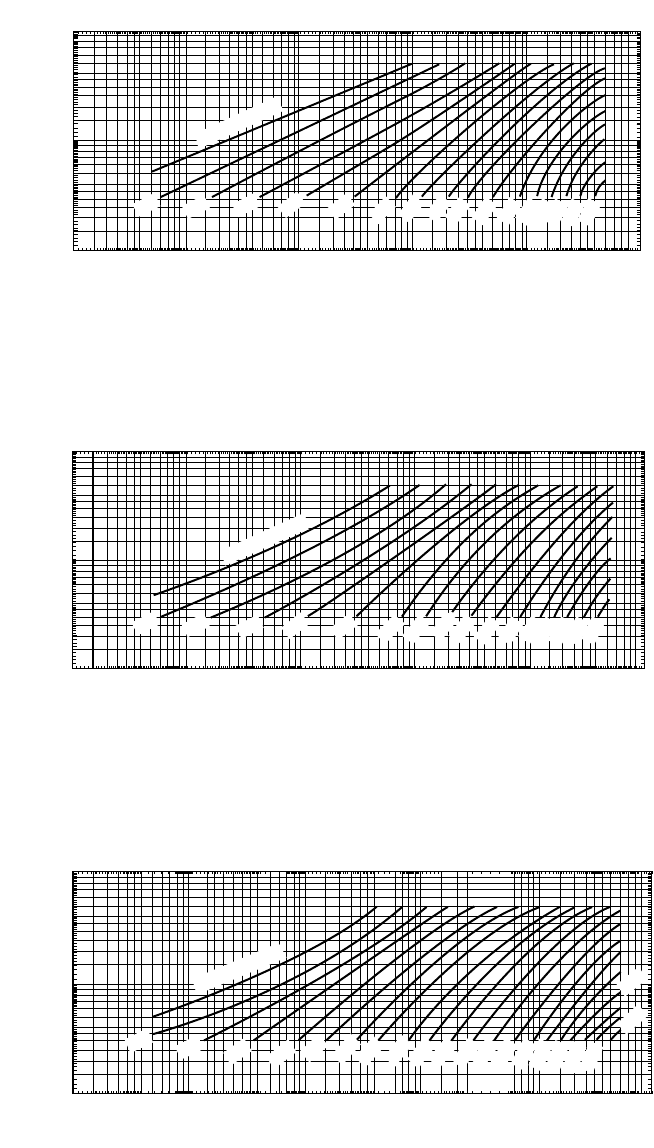
Highway and Airport Pavement Design 62-31
FIGURE 62.10 Thickness design curves for full-depth asphalt concrete. (Source: Asphalt Institute. 1991. Thickness
Design — Asphalt Pavements for Highways and Streets. Manual Series MS-1. With permission.)
FIGURE 62.11 Thickness design curves for type I emulsified asphalt mix. (Source: Asphalt Institute. 1991. Thickness
Design — Asphalt Pavements for Highways and Streets. Manual Series MS-1. With permission.)
FIGURE 62.12 Thickness design curves for type II emulsified asphalt mix. (Source: Asphalt Institute. 1991. Thickness
Design — Asphalt Pavements for Highways and Streets. Manual Series MS-1. With permission.)
Subgrade Resilient Modulus,
M
R
(psi)
Equivalent 18,000 lb Single Axle Load
Full-Depth Asphalt Concrete
MAAT = 60°F
10
4
10
3
10
3
10
4
10
5
4
2
4
2
4
2
10
5
10
6
4
2
4
2
10
7
4
2
4
2
10
8
4 in, minimum
5in
6in
7in
8in
9in
10in
11in
12in
13in
14in
15in
16in
17in
18in
19in
20in
Subgrade Resilient Modulus,
M
R
(psi)
Equivalent 18,000 lb Single Axle Load
Emulsified Asphalt Mix Type I MAAT = 60°F
10
4
10
3
10
3
10
4
10
5
4
2
4
2
4
2
10
5
10
6
4
2
4
2
10
7
4
2
4
2
10
8
4 in, minimum
5in
6in
7in
8in
9in
10in
11in
12in
13in
14in
15in
16in
17in
18in
19in
20in
Emulsified Asphalt Type II
MAAT = 60°F
Subgrade Resilient Modulus,
M
R
(psi)
10
4
10
3
10
5
4
2
4
2
Equivalent 18,000 lb Single Axle Load
10
3
10
4
4
2
10
5
10
6
4
2
4
2
10
7
4
2
4
2
10
8
6in
5in
23in
24in
21in
7in
8in
10in
11in
12in
13in
14in
15in
16in
17in
18in
19in
20in
22in
4 in, minimum
9in
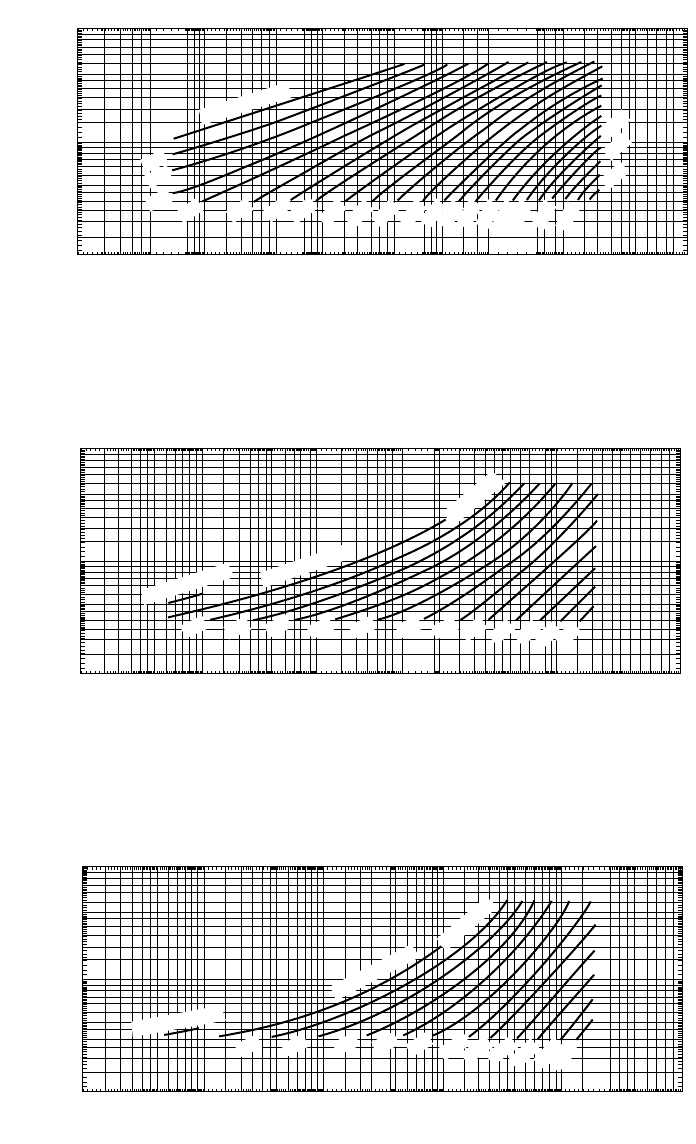
62-32 The Civil Engineering Handbook, Second Edition
FIGURE 62.13 Thickness design curves for type III emulsified asphalt mix. (Source: Asphalt Institute. 1991. Thickness
Design — Asphalt Pavements for Highways and Streets. Manual Series MS-1. With permission.)
FIGURE 62.14 Thickness design curves for asphalt pavement with 6-in. untreated aggregate base. (Source: Asphalt
Institute. 1991. Thickness Design — Asphalt Pavements for Highways and Streets. Manual Series MS-1. With permission.)
FIGURE 62.15 Thickness design curves for asphalt pavement with 12-in. untreated aggregate base. (Source: Asphalt
Institute. 1991. Thickness Design — Asphalt Pavements for Highways and Streets. Manual Series MS-1. With permission.)
Emulsified Asphalt Type III
MAAT = 60°F
Subgrade Resilient Modulus,
M
R
(psi)
10
4
10
3
10
5
4
2
4
2
Equivalent 18,000 lb Single Axle Load
10
3
10
4
4
2
10
5
10
6
4
2
4
2
10
7
4
2
4
2
10
8
6in
5in
7in
23in
25in
26in
22in
24in
8in
9in
10in
11in
12in
13in
14in
15in
16in
17in
18in
19in
20in
21in
4 in, minimum
Untreated Aggregate Base 6.0 in.
MAAT = 60°F
Subgrade Resilient Modulus,
M
R
(psi)
10
4
10
3
10
5
4
2
4
2
Equivalent 18,000 lb Single Axle Load
10
3
10
4
4
2
10
5
10
6
4
2
4
2
10
7
4
2
4
2
10
8
3 in, minimum
4 in, minimum
minimum
5in
6in
7in
8in
9in
10in
11in
12in
13in
14in
15in
16in
Untreated Aggregate Base 12.0 in.
MAAT = 60°F
Subgrade Resilient Modulus,
M
R
(psi)
10
4
10
3
10
5
4
2
4
2
Equivalent 18,000 lb Single Axle Load
10
3
10
4
4
2
10
5
10
6
4
2
4
2
10
7
4
2
4
2
10
8
3 in, minimum
4 in, minimum
minimum
5in
6in
7in
8in
9in
10in
11in
12in
13in
14in
15in

Highway and Airport Pavement Design 62-33
FAA Design Procedure for Flexible Airport Pavements
Based on the California bearing ratio (CBR) method of design, FAA [1978] developed — through test
track studies and observations of in-service pavements — pavement thicknesses that are necessary to
protect pavement layers with various CBR values from shear failure. In establishing the thickness require-
ments, the equivalent single-wheel loads of wheel assemblies were computed based on deflection con-
sideration. The design assumes that 95% of the gross aircraft weight is carried on the main landing gear
assembly and 5% on the nose gear assembly. Generalized design curves are available for single, dual, and
dual-tandem main landing gear assemblies. Design curves for specific wide-body aircraft have also been
developed.
Computation of Design Loading
The FAA design charts are based on the equivalent annual departures of a selected design aircraft. The
annual departures are assumed to occur over a 20-year life. The following steps are involved in the
selection of design aircraft and determination of equivalent annual departures:
1. Obtain forecasts of annual departures by aircraft type.
2. Determine for each aircraft type the required pavement thickness using the appropriate design
curve with the forecast number of annual departures for that aircraft. The aircraft requiring the
greatest pavement thickness is selected as the design aircraft.
3. Convert the annual departures of all aircraft to equivalent annual departures of the design aircraft
by the following formula:
(62.25)
where R
eq
=equivalent annual departures by the design aircraft
R
i
= annual departures of aircraft type i
F
i
=conversion factor obtained from Table 62.9
W = wheel load of the design aircraft
W
i
=wheel load of aircraft i
In the computation of equivalent annual departures, each wide-body aircraft is treated as a 300,000-lb
(136,100-kg) dual-tandem aircraft.
Example 62.13
This example entails computation of equivalent annual departures. The equivalent annual departures in
design aircraft for the design traffic of Example 62.5 are computed by means of Eq. (62.25), as follows.
Pavement Thickness Requirements
Figures 62.16–62.22 are the FAA design charts for different aircraft types. The charts have incorporated
the effects of load repetitions, landing gear assembly configuration, and the “wandering” (lateral distri-
bution) effect of aircraft movements. With subgrade CBR, gross weight, and total equivalent annual
departures of design aircraft as input, the total pavement thickness required can be read from the
Aircraft
Single-Wheel Load
W
i
(lbs.)
(R
1
¥ F
i
)
from Example 62.5 R
eq
by Eq. (62.25)
727-100 38,000 4500 2229
727-200 45,240 9900 9900
707-320B 38,830 5440 2890
DC-9-30 25,650 5500 655
747-100 35,625 102 61
Total equivalent design annual departures = 15,735
R
eq
log R
i
F
i
¥()
W
i
W
------
Ó ˛
Ì ˝
ϸ
¥
0.5
log=
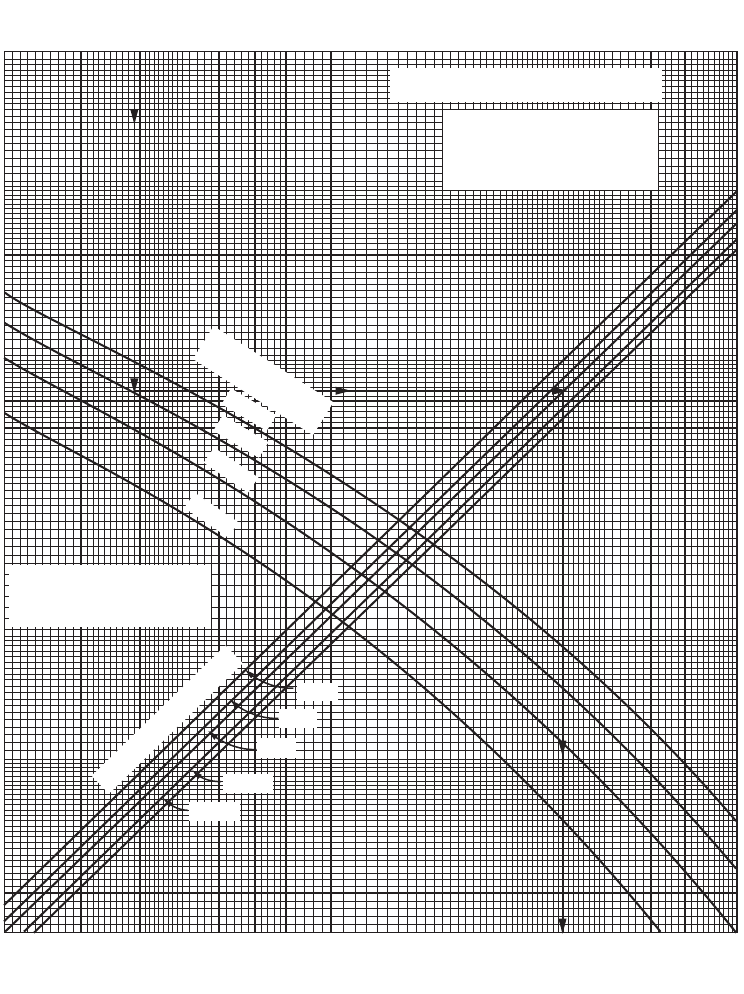
62-34 The Civil Engineering Handbook, Second Edition
appropriate chart. Each design chart also indicates the required thickness of bituminous surface course.
The minimum base course thickness is obtained from Fig. 62.23.
The FAA requires stabilized base and subbase courses to be used to accommodate jet aircraft weighing
100,000 lb or more. These stabilized courses may be substituted for granular courses using the equivalency
factors in Table 62.13.
FIGURE 62.16 Critical area flexible pavement thickness for single-wheel gear. (Source: Federal Aviation Adminis-
tration. 1978. Airport Pavement Design and Evaluation. Advisory Circular AC No. 150/5320-6C. With permission.)
THICKNESS - BITUMINOUS
SURFACES
4-IN. CRITICAL AREAS
3-IN NONCRITICAL AREAS
NOTE CURVES BASED ON 20-YEAR
PAVEMENT LIFE
GROSS AIRCRAFT
WEIGHT, LB
30,000
45,000
60,000
75,000
1 in. = 2.54 cm
1 1b. = 0.454 kg
ANNUAL DEPARTURES
25,000
15,000
6000
3000
1200
345678910
THICKNESS, IN.
15 20 30 40 50
345678910
CBR
15 20 25 30 40 50
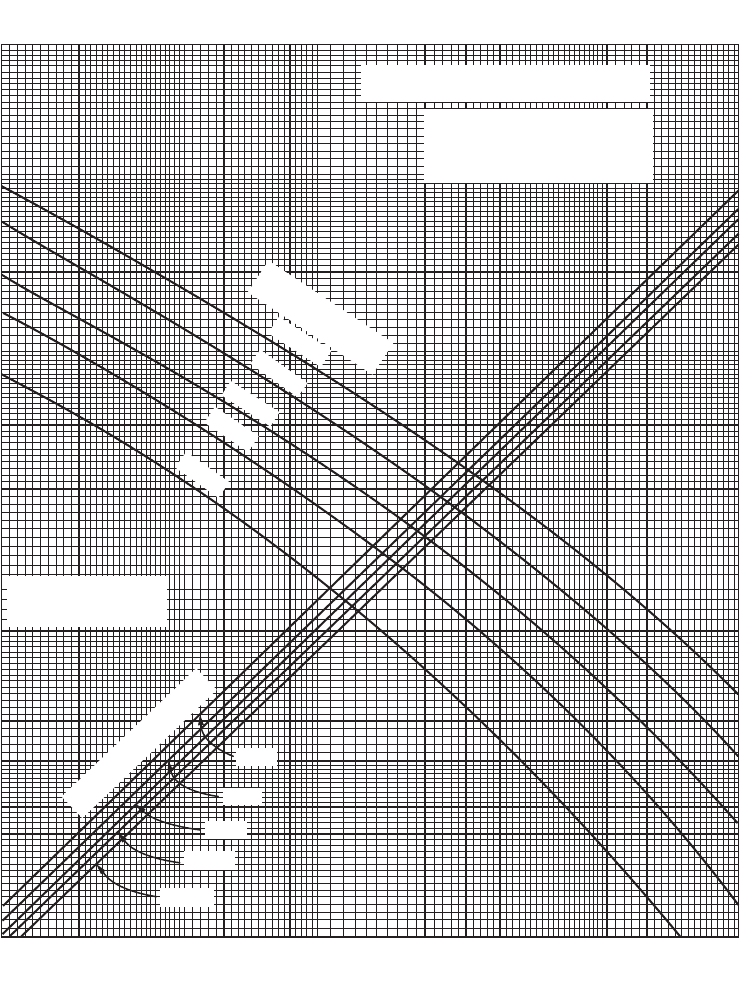
Highway and Airport Pavement Design 62-35
The FAA [1978] suggests that the full design thickness T be used at critical areas where departing
traffic will be using the pavement, 0.9T be used at areas receiving arriving traffic such as high-speed
turnoffs, and 0.7T be used where traffic is unlikely. These reductions in thickness are applied to base and
subbase courses. Figure 62.24 shows a typical cross section for runway pavements.
For pavements receiving high traffic volumes and exceeding 25,000 departures per annum, the FAA
requires that the bituminous surfacing be increased by 1 in. (3 cm) and the total pavement thickness be
FIGURE 62.17 Critical area flexible pavement thickness for dual-wheel gear. (Source: Federal Aviation Administra-
tion. 1978. Airport Pavement Design and Evaluation. Advisory Circular AC No. 150/5320-6C. With permission.)
NOTE: CURVES BASED ON 20-YEAR
PAVEMENT LIFE
THICKNESS - BITUMINOUS
SURFACES
4-IN. CRITICAL AREAS
3-IN. NON CRITICAL AREAS
CBR
345678910 1520 304050
345678910
THICKNESS. IN.
15 20 30 40 50
GROSS AIRCRAFT
WEIGHT, LB
200,000
150,000
100,000
75,000
50,000
1 in. = 2.54 cm
1 1b. = 0.454 kg
ANNUAL DEPARTURES
1200
3000
6000
15,000
25,000
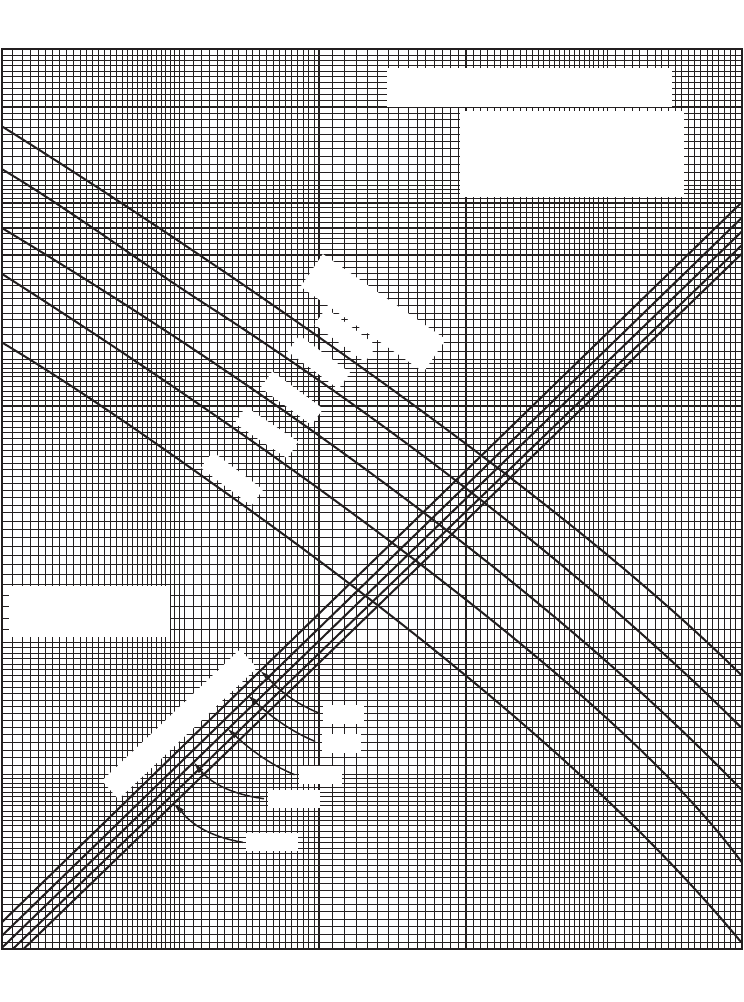
62-36 The Civil Engineering Handbook, Second Edition
increased as follows: 104, 108, 110, and 112% of design thickness (based on 25,000 annual departures)
for annual departures of 50,000, 100,000, 150,000, and 200,000, respectively.
Example 62.14
For the design traffic in Example 62.13, determine the thickness requirements for a pavement with
subgrade CBR = 5 and subbase CBR = 20.
FIGURE 62.18 Critical area flexible pavement thickness for dual-tandem gear. (Source: Federal Aviation Adminis-
tration. 1978. Airport Pavement Design and Evaluation. Advisory Circular AC No. 150/5320-6C. With permission.)
345678910
CBR
THICKNESS, IN.
15 20 30 40 50
345678910 1520 304050
THICKNESS - BITUMINOUS
SURFACES
4-IN. CRITICAL AREAS
3-IN NONCRITICAL AREAS
GROSS AIRCRAFT
WEIGHT, LB
400,000
300,000
200,000
150,000
100,000
1 in. = 2.54 cm
1 1b. = 0.454 kg
ANNUAL DEPARTURES
25,000
15,000
6000
3000
1200
NOTE: CURVES BASED ON 20-YEAR
PAVEMENT LIFE
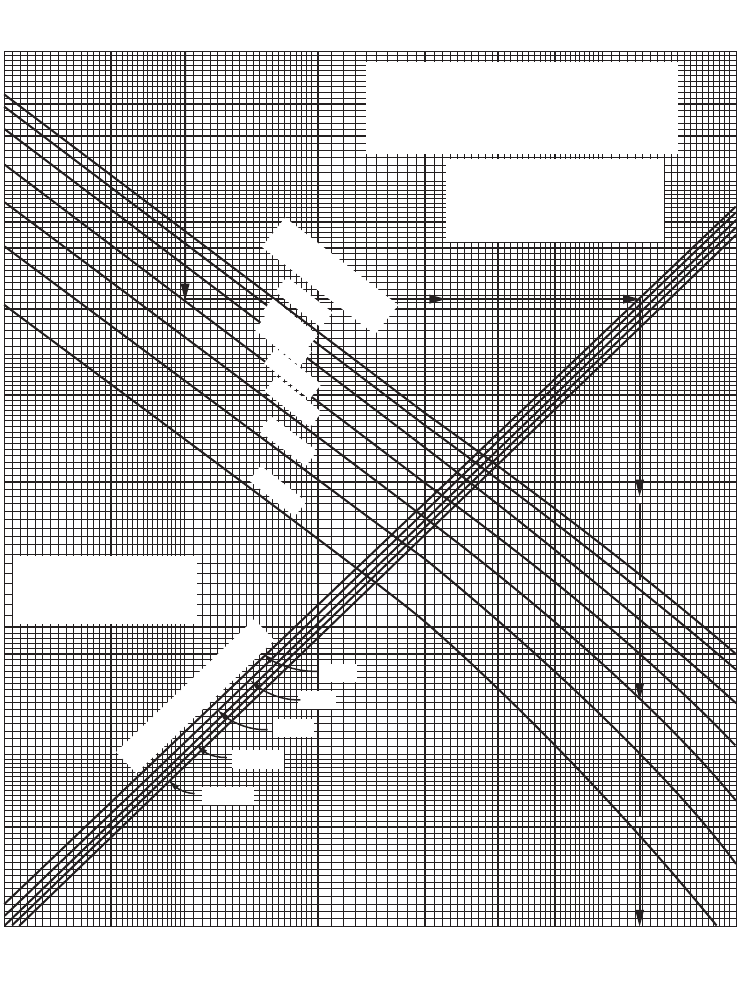
Highway and Airport Pavement Design 62-37
The design aircraft has dual-wheel landing gear and a maximum weight of 190,500 lb. Figure 62.17
gives the total thickness requirement as 45 in. above subgrade and 18 in. above subbase. Minimum asphalt
concrete surface for the critical area is 4 in. Thickness of base = 18 – 4 = 14 in. Thickness of subbase =
45 – 4 – 14 = 27 in. Since the design aircraft weighs more than 100,000 lb, stabilized base and subbase
are needed. Use bituminous base course with equivalency factor of 1.5 [see Table 62.13(a)] and cold-laid
FIGURE 62.19 Critical area flexible pavement thickness for B-747-100, SR, 200B, 200C, and 200F. (Source: Federal
Aviation Administration. 1978. Airport Pavement Design and Evaluation. Advisory Circular AC No. 150/5320-6C.
With permission.)
345678910
THICKNESS, IN.
15 20 30 40 50
345678910
CBR
15 20 25 30 40 50
NOTE: CURVES BASED ON 20-YEAR
PAVEMENT LIFE
CONTACT AREA = 245 SQ IN.
DUAL SPACING = 44 IN.
TANDEM SPACING = 58 IN.
THICKNESS - BITUMINOUS
SURFACES
5-IN. CRITICAL AREAS
4-IN NONCRITICAL AREAS
GROSS AIRCRAFT
WEIGHT, LB
850,000
800,000
700,000
600,000
500,000
400,000
300,000
1 in. = 2.54 cm
1 1b. = 0.454 kg
ANNUAL DEPARTURES
25,000
15,000
6000
3000
1200
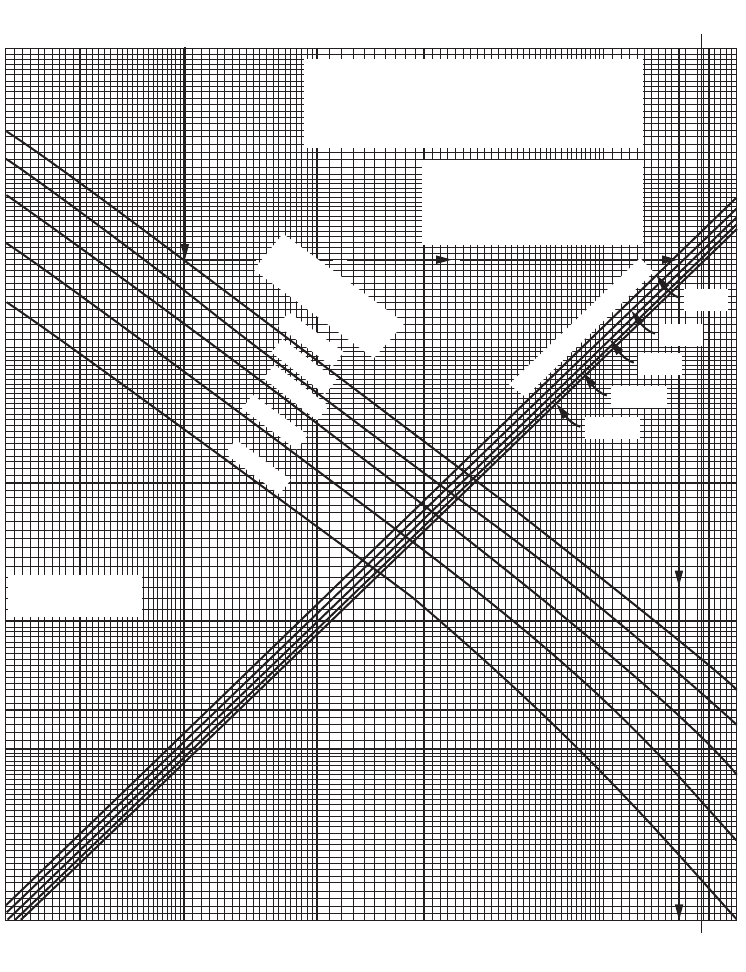
62-38 The Civil Engineering Handbook, Second Edition
bituminous base course with equivalency factor of 1.5 [see Table 62.13(b)]. The required stabilized base
thickness = (14/1.5) = 9 in., and the required subbase thickness = (27/1.5) = 18 in., both for critical
areas. In the case of noncritical areas, the asphalt concrete surface thickness is 3 in., and the corresponding
base and subbase thicknesses are (9 ¥ 0.9) = 8 in. and (18 ¥ 0.9) = 16 in.
FIGURE 62.20 Critical area flexible pavement thickness for B-747-SP. (Source: Federal Aviation Administration.
1978. Airport Pavement Design and Evaluation. Advisory Circular AC No. 150/5320-6C. With permission.)
NOTE: CURVES ARE BASED ON 20-YEAR
PAVEMENT LIFE.
CONTACT AREA = 210 SQ IN.
DUAL SPACING = 43.25 IN.
TANDEM SPACING = 54 IN.
THICKNESS - BITUMINOUS
SURFACES
5-IN. CRITICAL AREAS
4-IN. NONCRITICAL AREAS
GROSS AIRCRAFT
WEIGHT, LB
700,000
600,000
500,000
400,000
300,000
1 in. = 2.54 cm
1 Ib. = 0.454 kg
ANNUAL DEPARTURES
1200
3000
6000
15,000
25,000
345678910 1520 304050
345678910 152025304050
THICKNESS, IN.
CBR
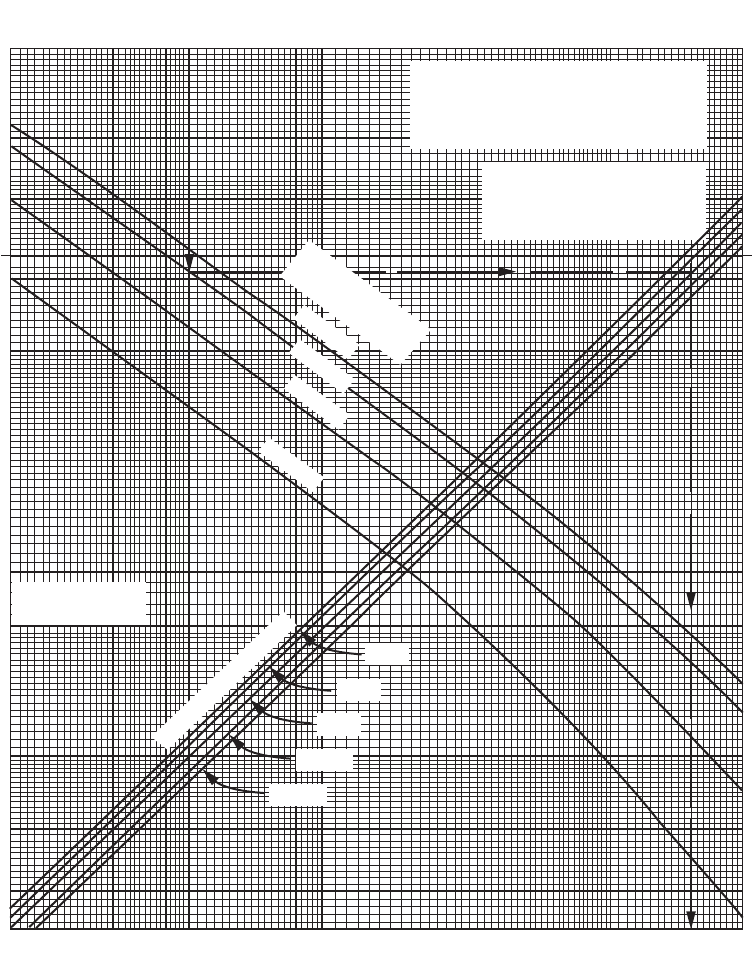
Highway and Airport Pavement Design 62-39
Mechanistic Approach for Flexible Pavement Design
The methods described in the preceding sections provide evidence of the continued effort and progress
made by engineers toward adopting theoretically sound approaches with fundamental material properties
in pavement design. For example, the Asphalt Institute method described is a complete revision that uses
FIGURE 62.21 Critical area flexible pavement thickness for DC 10-10, 10CF. (Source: Federal Aviation Administra-
tion. 1978. Airport Pavement Design and Evaluation. Advisory Circular AC No. 150/5320-6C. With permission.)
NOTE: CURVES BASED ON 20-YEAR
PAVEMENT LIFE
CONTACT AREA = 294 SQ IN.
DUAL SPACING = 54 IN.
TANDEM SPACING = 64 IN.
THICKNESS - BITUMINOUS
SURFACES
5-IN. CRITICAL AREAS
4-IN. NONCRITICAL AREAS
GROSS AIRCRAFT
WEIGHT, LB
450,000
1 in. = 2.54 cm
1 Ib. = 0.454 kg
ANNUAL DEPARTURES
1200
3000
6000
15,000
25,000
345678910 1520 304050
THICKNESS, IN.
345678910 1520 3025 40 50
CBR
400,000
300,000
200,000
